What are the different types of telescope?
Refractor to reflector, Schmidt-Cassegrain to Maksutov-Cassegrain - this is everything you need to know about the different types of telescopes.
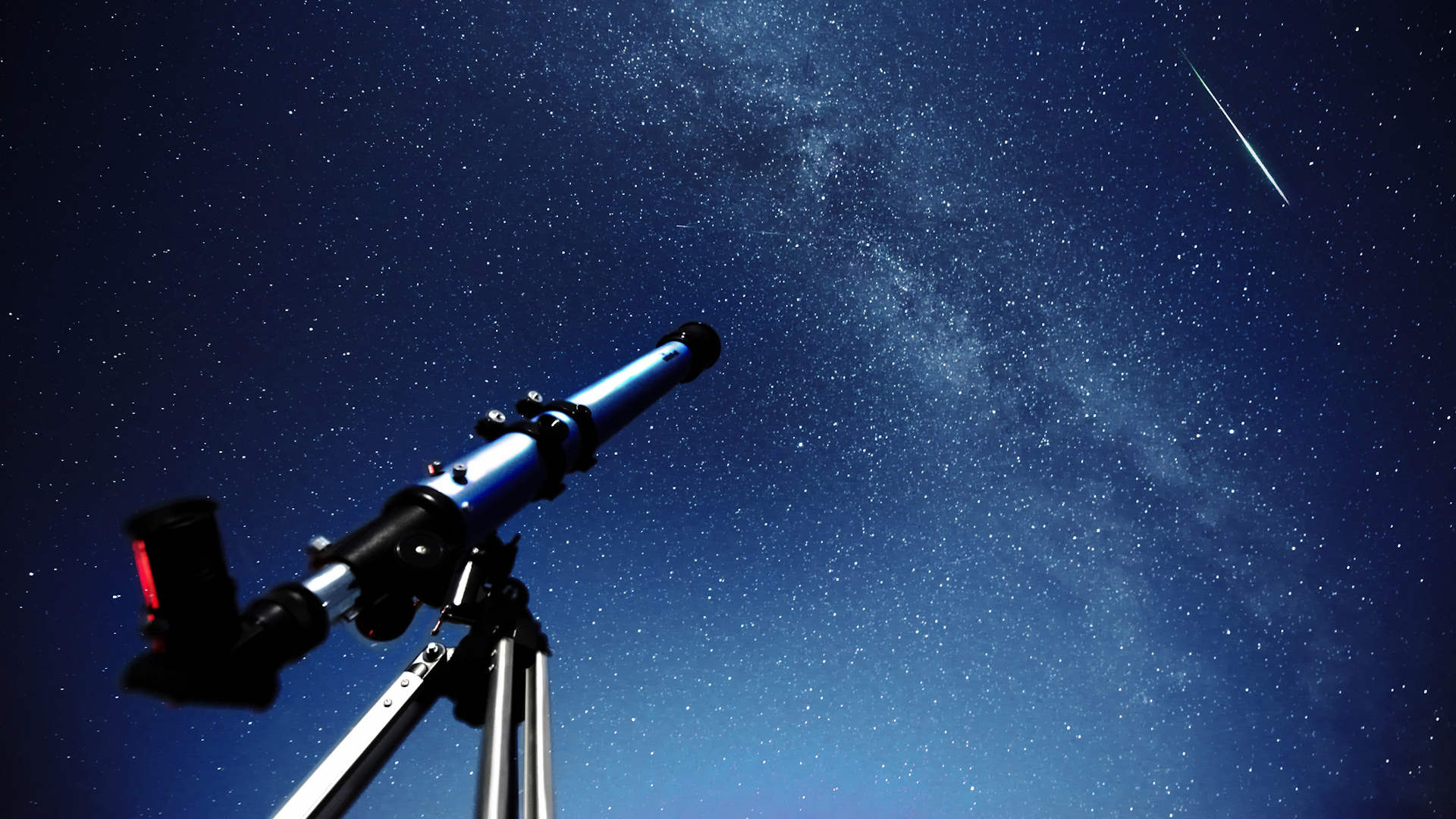
Telescopes gather and focus light using precisely-shaped mirrors and lenses (or a combination of both). The larger the telescope’s main mirror or lens, the more light is gathered and the more detail you’ll be able to see — this is important in the realm of astronomy, since many celestial objects are rather small and faint. Eyepieces are used to magnify the image focused by the main mirror or lens. There are three basic types of telescope: reflectors, refractors and catadioptric, but how do you which type is the best telescope for you?
The answer depends on how much you’re willing to spend, what you find most exciting about the night sky and whether that interest is going to stay with you for a good amount of time. For instance, if you’re a solar system observer and you would like nothing more than to gaze at the moons of Jupiter, the rings of Saturn or the craters and ridges of the moon then you should go for a powerful telescope that’s capable of achieving this. If you can’t decide and prefer to observe anything and everything in the night sky but you want a telescope that’s relatively easy to set up, then you should go for something a little cheaper and easier to use.
There are three basic types of telescope: reflectors, refractors and catadioptric. We'll go into each type in detail below, so you know which type is right for you.
Refractor telescopes
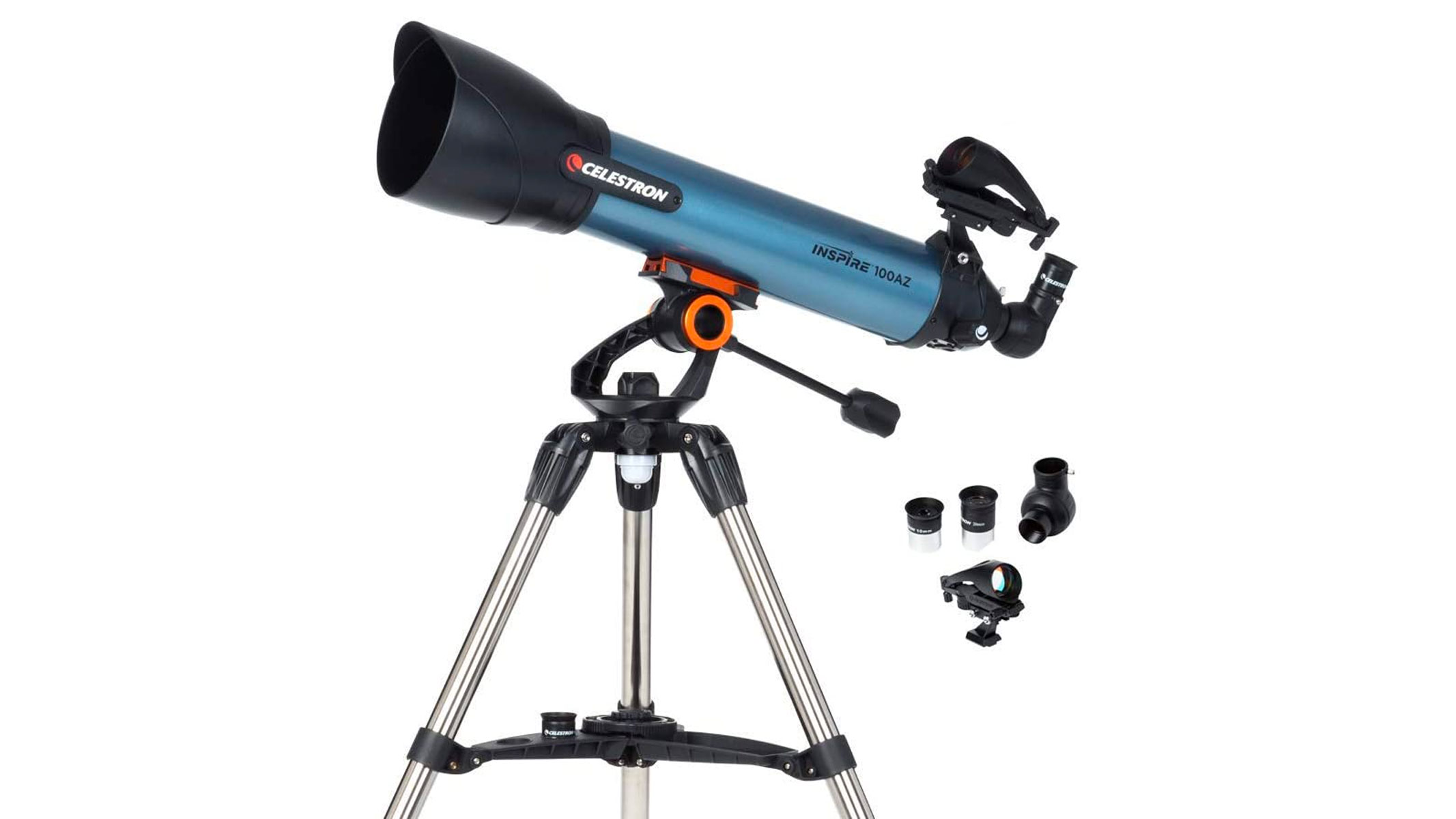
- General night sky viewing
- Low-high magnification views of the moon and planets
The refractor is the original telescope. In fact, it is such an iconic and classic design that when children are asked what a telescope looks like, they almost always draw or describe a refractor. Invented around 1609 — by whom, exactly, is debated — a refractor is essentially a spyglass, a tube with lenses at either end which work together to make faraway objects appear closer. This type of telescope was famously used by the great scientist Galileo to observe craters on the moon, sunspots and discover the four largest moons of Jupiter.
During the 1970s or 80s, most telescopes bought by amateur astronomers were refractors, because good-quality reflectors were just so expensive to produce. Today the tables have been turned and large reflectors probably outsell refractors. However, high-quality refractors remain the telescope of choice for astronomers wanting to enjoy detailed views of the moon and planets. Refractors perform so well on these objects because, unlike reflectors, their tubes are closed, which means less air moving about inside them which in turn means much less distortion of the image visible through them.
When purchasing a refractor it’s important to buy the best you can afford. The cheapest refractors have poor-quality lenses, which are often badly aligned. This results in images with distortion around the edges and colored fringes too. Refractors with the best quality lenses are very expensive compared to reflectors, but you really do get what you pay for.
We'd only really recommend cheap refractor telescopes for young kids who are just discovering the hobby. This is because they're an inexpensive way to spark that interest, and you can get them a more expensive, better-quality model when you know if they're sticking with it or not.
What are refractor telescopes best at?
- Good for viewing planets and moons
- Not good for viewing galaxies and nebulas
If you want to enjoy crisp, detailed views of Saturn’s rings, the cloud bands of Jupiter and the surface features of Mars, then a refractor is the telescope for you. It will provide much better views of those objects than a reflector of equal or even larger aperture. A refractor will also provide you with wonderful views of star clusters and double stars.
However, refractors do not perform as well as reflectors when turned towards the “faint fuzzies,” such as galaxies and nebulas, so if you are wanting to observe famous objects such as the Andromeda Galaxy (Messier 31) and the Orion Nebula (Messier 42) then a refractor might not be your best choice.
Advantages of a refractor telescope
The main advantages of a refractor telescope are:
- Small aperture, good optical quality refractors are available at very reasonable prices.
- Great for getting detailed views of the moon and planets.
- Small refractors can be easy to assemble and use.
- Unlike reflectors, refractors do not invert or reverse their views, which is less confusing for a beginner.
Disadvantages of a refractor telescope
The main disadvantages of a refractor telescope are:
- Not great for viewing galaxies and nebulas.
- Susceptible to chromatic aberration.
- High-quality models can get expensive.
Mounts for refractor telescopes
- Basic tripods are the standard option
- Alt-azimuth mounts can make aligning to a target easier
- Computerized go-to mounts can do the hard work for you
Modern refractors come on a wide variety of mounts, but it should be noted that all refractors are supported by tripods. As with any telescope, it’s important to pick a refractor mounted on a stable, steady tripod or the image you see looking through it will jump around so much it will be useless. Many of the “budget” refractors available are actually of quite good quality optically, but are let down by the poor quality tripods they come supplied with. Small “tabletop” tripods are particularly useless, and telescopes that come with those are a little better than toys, to be honest. However, a budget refractor’s poor tripod can often be replaced with a good photographic tripod and the refractor tube mounted on that.
Refractors on simple alt-azimuth mounts are essentially “point and look'' telescopes — you just move the tube up and down and from side to side until it’s pointed roughly toward what you want to look at, then align the telescope more accurately using a small “finder scope” mounted on the main tube. More complicated mounts allow you to find objects in the sky by first aligning the telescope with the Pole Star and then turning dials on the mount until the telescope is pointed at a specific set of coordinates in the sky.
Many modern refractors are mounted on computerized “GoTo'' mounts, which make them very easy to use. After aligning the telescope on the Pole Star, and then on several additional “guide stars,” you enter the date and your location into the computer using a keypad on a handset, then select an object from the telescope’s own database by scrolling through various menus. The telescope then finds that object in the sky for you, slewing around until the object is centered in its eyepiece.
How easy are refractor telescopes to use?
Entry-level refractors are easy to assemble and maintain. Unlike a reflector, refractors don’t need aligning or collimating before every use. However, more advanced refractors, just like large reflectors, take a lot of setting up and aligning before they can be used.
Reflector telescopes
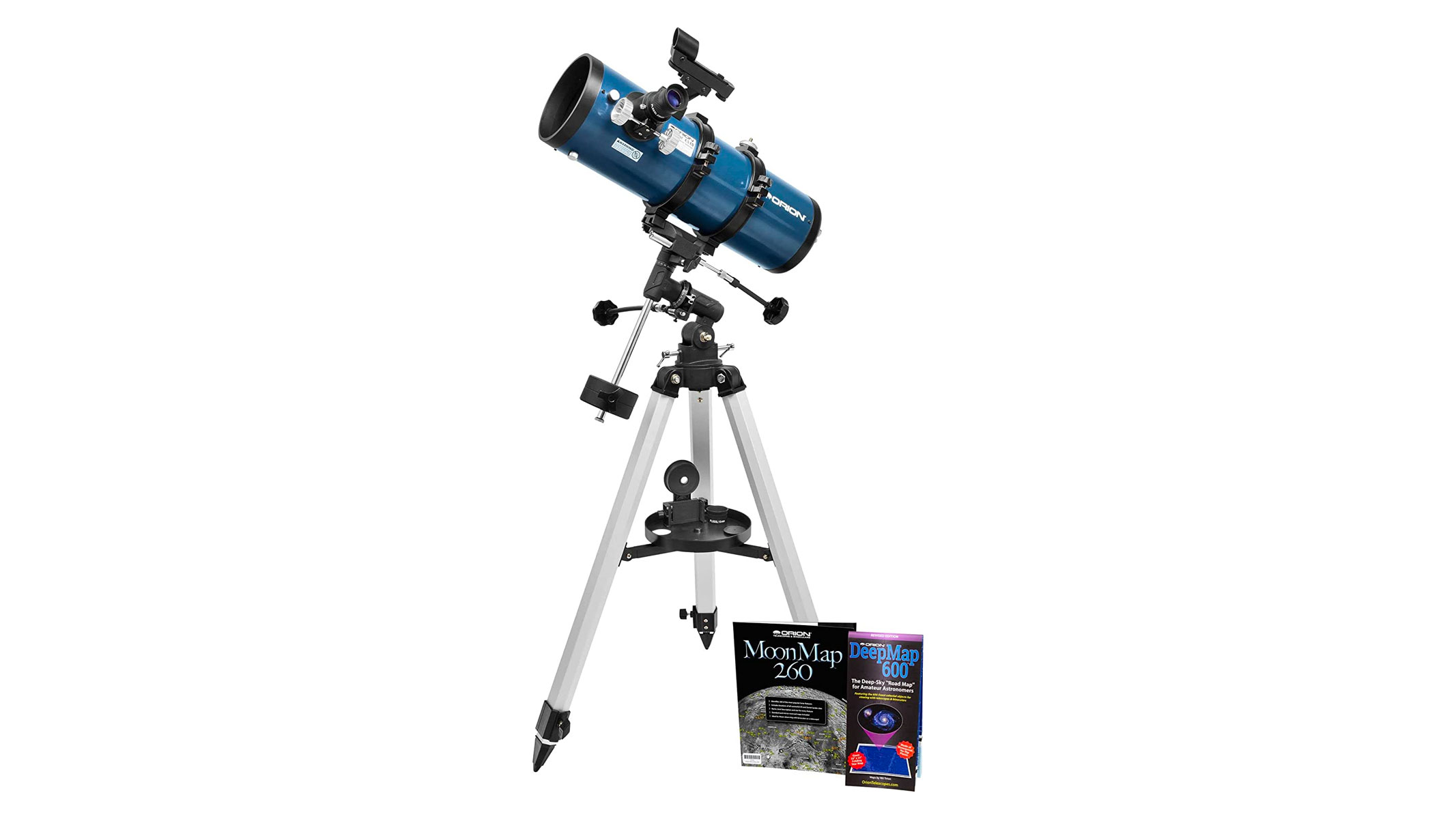
As their name suggests, reflector telescopes use mirrors instead of lenses. They are basically a tube, open at the front, with a large mirror mounted down the bottom end. Light from the night sky enters the tube, hits the mirror, reflects off it back up and is diverted out of the tube’s side by a smaller, secondary mirror into a focusing eyepiece.
It is generally accepted that the first working reflector was built by Sir Isaac Newton back in 1668, although others had designed similar instruments before him. Almost 350 years later, reflectors are probably the most popular type of telescope. Not just because they are a good general-purpose telescope, which can be used for viewing both deep sky and solar system objects, but because an entry-level reflector (with a mirror 6-8 inches in diameter) can be bought for a very reasonable sum. In fact, in terms of cost per inch of aperture, a reflector is definitely better value for money than a refractor.
What are reflector telescopes best at?
When seen standing next to fragile-looking, thin-tubed refractors, the sturdy, cannon-like tubes of a reflector telescope make them look very impressive and powerful. Today, go to any dark sky star party and most telescopes in use there will be reflectors. This is because the distant galaxies and nebulas that deep-sky observers want to see are very far away and faint (the so-called “faint fuzzies”) and reflectors are perfect for viewing them as they are essentially “light buckets” which collect a lot of starlight with their wide mirrors.
Under a truly dark sky, even an entry-level reflector will provide wonderful views of the gracefully curving arms of spiral galaxies and the misty blossoms of nebulas. They will still give pleasing views of solar system objects, but their open tubes allow air to circulate inside, which reduces the sharpness of their images. So, when aimed at planets or the moon they will definitely be outperformed by a refractor (with its closed tube) of a similar aperture.
The cheapest and most simple reflectors to use are “Dobsonians.” These are essentially just large telescope tubes mounted in a box-like cradle that can be swiveled around to point the telescope in any direction required. The tube itself is then tipped up or down until the target is in view in the eyepiece. Note: the eyepiece of a reflector is found on the side of the telescope tube, not on the far end, as is the case with a refractor. This is because a small secondary mirror mounted close to the open end of the tube reflects the light to the side and into a focuser with an eyepiece.
Dobsonians are now hugely popular and mass-produced, and it is possible to purchase a brand new Dobsonian reflector with an aperture of 8-10 inches for just a couple of hundred dollars — just a couple of decades ago this would have been considered a semi-professional instrument.
Advantages of a reflector telescope
The main advantages of a reflector telescope are:
- They offer great value for money. Large aperture, good optical quality reflectors are now available at very reasonable prices.
- They're excellent for viewing deep-sky objects such as galaxies and nebulas.
- Cradle-mounted Dobsonian reflectors are very easy to assemble and use.
Disadvantages of a reflector telescope
The main disadvantages of a reflector telescope are:
- They require a degree of maintenance to keep the optics clean and aligned.
- Manual Dobsonians have no drive and objects need to be found by ‘star-hopping.’
Mounts for reflector telescopes
Just like refractors, modern reflectors come on a wide variety of mounts. And, again like refractors, if their tripod isn’t sturdy and solid the images they produce will wobble in the eyepiece like jello, rendering them useless.
Refractors on Dobsonian mounts are essentially “point and look” telescopes, like their alt-azimuth refractor cousins. You can also buy reflectors on the previously described, more complicated “equatorial” mounts, and on computerized “GoTo” mounts too.
How easy are reflector telescopes to use?
It’s important to point out that large Dobsonian telescopes can be heavy and bulky. The larger ones are definitely more “moveable” than “portable,” and will need a car to transport them to an observing site.
One complication with reflectors is that they turn the object in the eyepiece upside down — and sometimes back to front, too — compared to the view the naked eye sees. This isn’t important looking at stars or deep sky objects, but it can be rather confusing for a beginner when they look into the eyepiece and see a planet or the moon’s features mixed up compared to what’s on their charts.
Another thing to bear in mind with reflectors is that their mirror systems are sensitive to being handled and moved. Consequently, most reflector owners have to realign — or “collimate” — their mirrors before every use, because they have gone out of alignment whilst being disassembled or put away. This is a chore at first but it soon becomes just another part of the setting-up routine.
Catadioptric telescopes: Maksutov-Cassegrain and Schmidt-Cassegrain
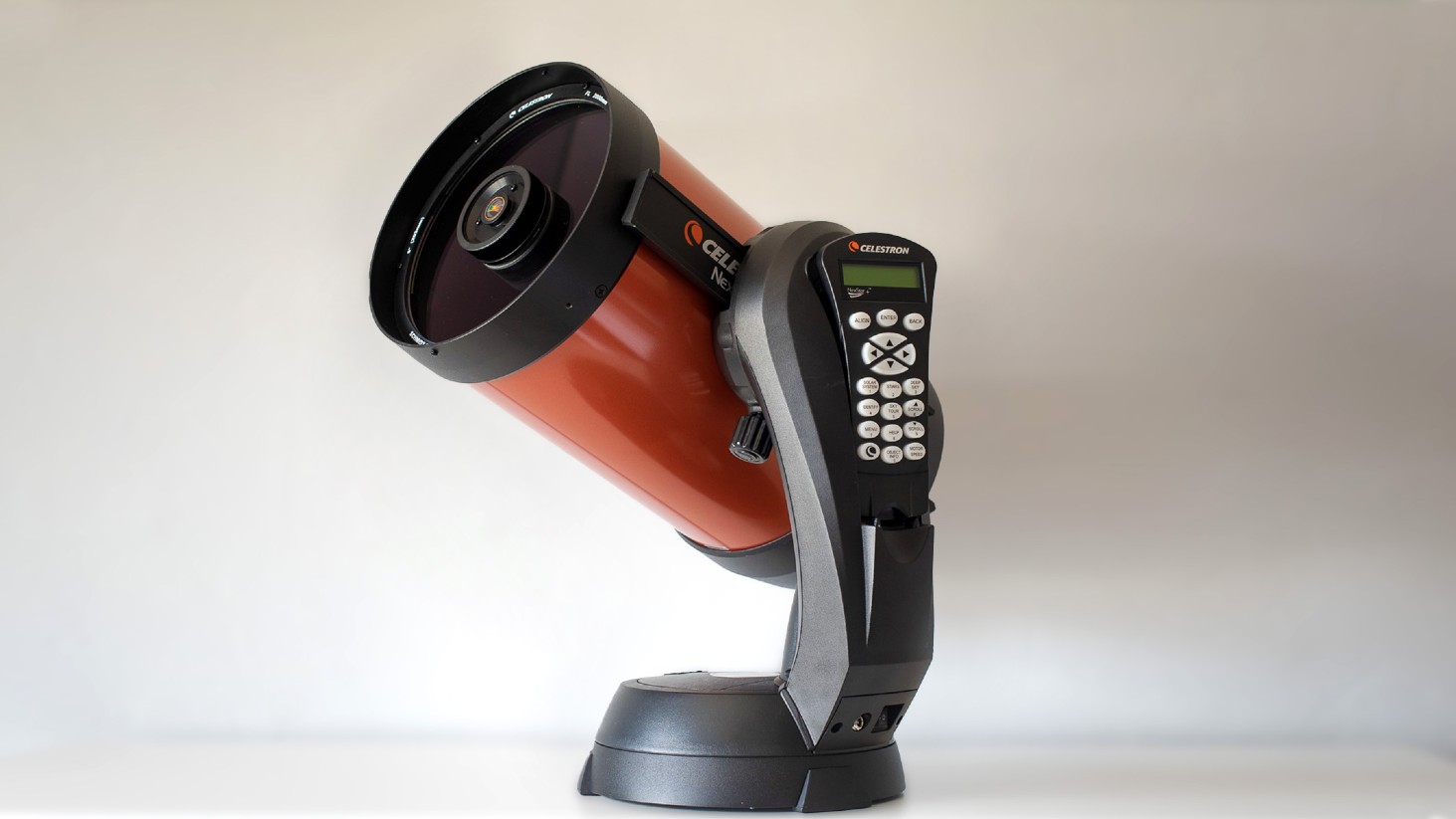
Catadioptric (or “cat”) telescopes combine the optical systems and hardware used in both reflectors and refractors, taking the best parts of both instruments for an excellent observing experience devoid of optical aberration.
In effect, a catadioptric is a long, large aperture reflector that has been put in the Death Star’s trash compactor and squashed and scrunched up into a shorter, stubbier tube, with some lenses put in to make it perform even better.
You can always spot a “cat” at a star party or in a telescope shop because they’re usually surrounded by a crowd of adoring stargazers. They look like shiny metal barrels, often colored a striking metallic blue or orange, mounted on the top of sturdy-looking tripods.
Advantages of a catadioptric telescope
The main advantages of a catadioptric telescope are:
- Outstanding for viewing moons and planets (Maksutov-Cassegrain).
- Also great for viewing galaxies and nebulas (Schmidt-Cassegrain).
- Come with computer-controlled drives and GoTo facilities.
Disadvantages of a catadioptric telescope
The main disadvantages of a catadioptric telescope are:
- Tend to be fairly heavy.
- Usually expensive.
- Need an occasional adjustment to keep optics precisely aligned.
Mounts for catadioptric telescopes
All cat telescopes are mounted on very sturdy tripods. Almost all are now “GoTo” telescopes, with built-in computers which, once the telescope is properly aligned with the pole, can be pointed at any object in the sky simply by selecting its name or details with a handset.
How easy are catadioptric telescopes to use?
Catadioptrics are now the telescope of choice for many serious observers and astrophotographers. Their complicated optical systems mean they suffer from less image distortion than refractors or reflectors, and when packed away they take up less room in the back of a car, too — useful for trips away from home to dark skies.
However, catadioptrics aren’t perfect. They are expensive, typically three times more expensive than reflectors of the same aperture, so the high-end models are beyond the budgets of most people wanting to buy their first telescope. Smaller, more modest models are available, but for the money they cost you might as well buy a larger refractor or reflector.
They also offer views of very bright objects, such as the moon, that have less contrast than refractors or reflectors. Like standard reflectors, they are more suitable for deep-sky than lunar observations.
Another potential problem for a catadioptric buyer to consider is that they can be hard to use to look at objects overhead due to the location of their focuser and eyepiece at the rear end of the tube. Looking at an object high in the sky through a "cat" often means having to bend down or sometimes even kneel on the ground to look into the eyepiece. However, owners of these instruments put up with that slight discomfort for the amazing views they enjoy through their telescopes.
Schmidt-Cassegrain vs. Maksutov-Cassegrain
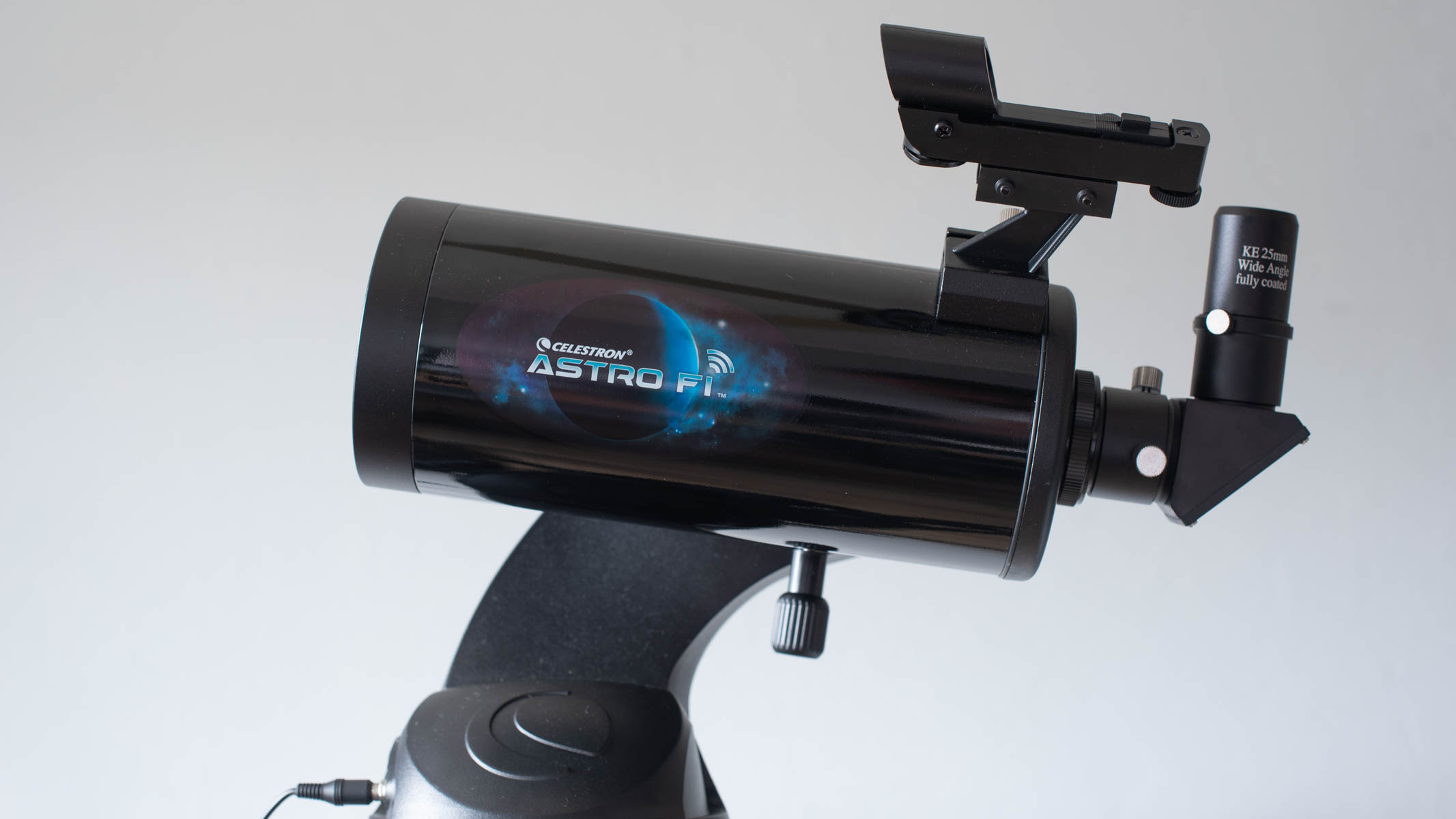
There are two main types of catadioptric telescopes — Schmidt-Cassegrain and Maksutov-Cassegrain.
The Schmidt-Cassegrain is the most common type, and incorporates a large primary mirror, a smaller secondary mirror, and a correcting plate lens. Light passes down the tube, through the corrector plate, reflects off the primary mirror and goes back up the tube where it is reflected downwards again off the secondary mirror. The light then passes through a hole in the center of the primary mirror into the telescope eyepiece.
The Maksutov-Cassegrain design is very similar to the Schmidt-Cassegrain in that it uses a combination of mirrors and lenses to collect light and form an image. However, a “Mak” uses a much more highly curved corrector plate lens at the front of the tube to help focus the incoming light onto the main mirror. Like refractors, the optical qualities of the Maksutov make them more suitable for observing the moon and solar system objects, rather than deep-sky targets.
Essential telescope buying tips

The first step is to do plenty of research, whether that involves reading up on your hobby using the best astronomy books or getting some advice from a seasoned astronomer at your local astronomical society before making a purchase. It’s also essential that you shop around to compare prices to make sure that there’s a satisfactory trade-off between how much you can afford and what the telescope can do for you.
Whatever capabilities you have decided on, the basic rules for choosing a telescope are essentially the same:
What to avoid when buying a telescope
- Cheap, poor-quality models that you can often find being sold online.
- Instruments that you know you’ll find particularly difficult to set up or too heavy to carry.
- Telescopes claiming to offer fantastic magnification for very little cost — if it sounds too good to be true, then it most probably is.
From there you need to consider the what and where of your telescope. What do you want to see through your telescope — the moon and planets? Faint objects such as galaxies, clusters and nebulas? Where do you want to use your telescope — away from home at a dark sky site, or just from your garden?
After that, you need to consider your budget — how much are you looking to spend We'd recommend that beginners start off with something affordable, but good quality. You don't want to buy a super cheap telescope as you won't have a good first experience, but at the same time, you shouldn't drop $5,000 on a high-end telescope before you know you're going to stick with the hobby. Expensive telescopes are often more complex too, so they're usually not suitable for beginners.
Finally, you need to think about whether you want a telescope that can take photos, or if you're just planning to use it visually. Some scopes have built-in cameras, while others can be used in conjunction with cameras or even your smartphone to help you capture the image.
What to look for when buying a telescope
- Buy from a reputable astronomical retailer or second-hand from a trusted astronomer.
- Choice is a little easier if you have an idea about what kind of astronomy you’d like to pursue — be it lunar, planetary or deep-sky observing.
- Ask someone who knows about telescopes (say in your local astronomical society) for their opinion and/or recommendations.
- Can the telescope be upgraded in the future? Upgrades include setting it up on a better tripod or mount, adding computer control, better eyepieces and a finderscope.
- Look for portability and ease of use.
- Accessories provided with the telescope are a great bonus to look out for.
Aperture vs. Magnification
It’s easy to go for a telescope that boasts a large magnification, but in reality this isn’t the main spec you need to worry about. Instead, you should focus on the telescope’s aperture — that is the diameter of the objective lens or mirror that collects light. The larger the aperture is, the more light that your telescope will collect and therefore the better the views. A 6-inch reflector telescope, for example, has a mirror that collects four times more light than a 3-inch mirror and so a faint galaxy being observed on a moonless light will be four times brighter.
You should next consider the focal length when purchasing a telescope. The main thing to remember here is that bigger isn’t always better when it comes to looking at which instrument to select. It really all comes down to the targets you are wanting to view. A shorter focal length, say about 20 inches (500 mm), will provide a field of view for you to take in large areas of the Milky Way and showpieces such as the Pleiades (M45) open star cluster and Orion Nebula (Messier 42). Meanwhile, high-power objects such as the moon, planets or double stars need a telescope with a longer focal length of about 80 inches (2,000 mm).
If you’re an astronomer that can’t really decide, then there are plenty of compromises between aperture and focal length, but you must be willing to make a few trade-offs in terms of the weight of the instrument, the field of view and its power.
Sign up for the Live Science daily newsletter now
Get the world’s most fascinating discoveries delivered straight to your inbox.

Gemma was the former content director of Live Science, Space.com, science and space magazines How It Works and All About Space, history magazines All About History and History of War. She is the author of several books including "Quantum Physics in Minutes", "Haynes Owners’ Workshop Manual to the Large Hadron Collider" and "Haynes Owners’ Workshop Manual to the Milky Way". She holds a degree in physical sciences, a master’s in astrophysics and a PhD in computational astrophysics.










